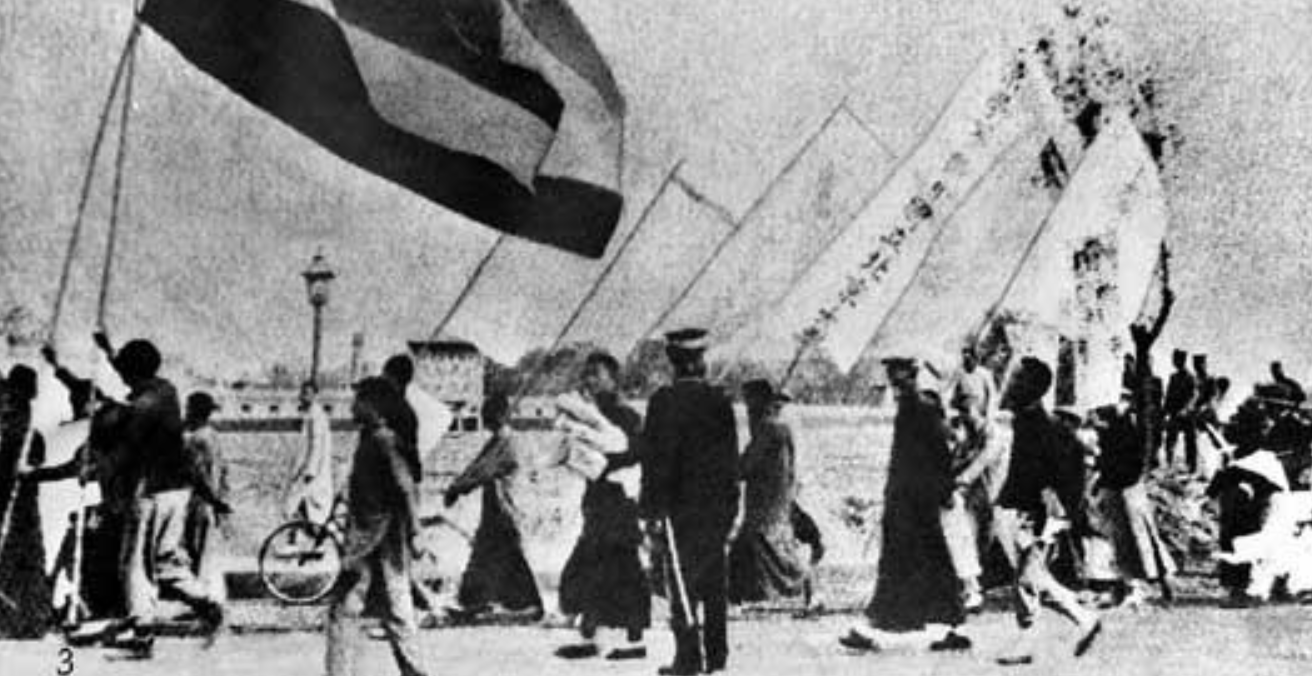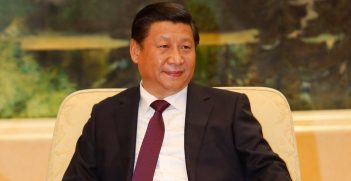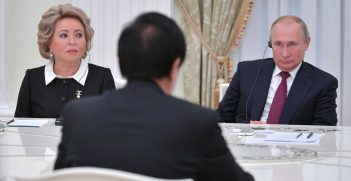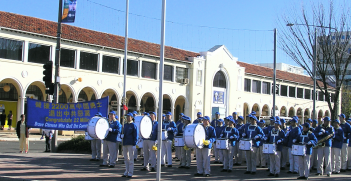China’s May 4 Movement One Hundred Years On

This year marks the 100th anniversary of China’s May 4 movement. The student protests against anti-imperialism in 1919 were a defining moment in the nation’s history. But despite their significance, the Chinese Communist Party is navigating the centenary with care and stressing that there is no longer any cause nor room for dissent.
China has to navigate some significant anniversaries this year. It is seventy years since the foundation of the People’s Republic; thirty years since the Tiananmen Square demonstrations that led to a brutal military crackdown; and one hundred years since the May 4 “incident” (Wusi shijian) that gave its name to a broad movement of cultural, social and political upheaval. Modern China was born out of the May 4 movement. What was it about, how did it shape China and what remains of it in the shadows of the present?
The May 4 incident was itself sparked by a stark reminder of China’s political and diplomatic weakness in the international society of the day. Approximately 3,000 of Beijing’s university students gathered in Tiananmen Square and then marched towards the foreign legation of the city. They were protesting the Versailles peace treaty’s hand over of German territorial concessions in northeast China to Japan, rather than returning them to China. Clashes with police led to one student eventually dying from injuries they sustained and the arrest of 32 others. But this relatively insignificant incident highlighted China’s struggles against a weak warlord government, that appeased foreign imperialism, and the remnants of a moribund “feudal” system. Subsequent protests and strikes around the country generated widespread sympathy and support for the students’ aims. The profound interrogation of the value of Chinese culture that followed became known as the May 4 movement.
Many of the signature events of the May 4 generation preceded the incident itself. The incursions of foreign imperialism, the collapse of the dynastic system and failure of republican democracy, were all precursors to the May 4 movement. As was the foment of ideas from “the West” and the influential journal New Youth, which started in 1915. But it was not until May 4 that Chinese culture itself was “put in the dock” and cross-examined by a vast range of intellectual currents. At one end of the spectrum, there was a radical iconoclasm that rejected traditional, Confucian culture as a petrified straitjacket on a modern, progressive China. The way forward was through “Mr Democracy” and “Mr Science.” The relative merits of socialism, anarchism, feminism and nihilism were debated in journals and study societies around the country. And with the Bolshevik “victory” in Russia, the communism of Lenin had an obvious appeal to those disillusioned with democracy in China. At the other end of the spectrum, the defence of the traditional Chinese “spirit” or metaphysics, perceived to be morally superior to the materialist “West,” continued against the odds. Somewhere in between, liberalism, the pragmatism of John Dewey and a commitment to empirical research into “problems,” were held up against the ideology of “isms.” Embracing this panoply of thought was the use of vernacular Chinese, which rapidly spread as the preferred medium for all forms of literature.
The cultural richness and variety of the May 4 movement stood at times in tragic contrast with the social and political realities of China. The vulnerability of ideas dislocated from a social base soon became all too clear. If there was one thread connecting all these ideas, it was a national sympathy for China’s plight. May 4 also ushered in political movements which concentrated their energy on ways of realising national reunification. The ideologies of nationalism, socialism and communism were melded with social class and the application of violence in a long quest for a “New China” in the form of an independent sovereign state. At Beijing University, a key centre of the May 4 movement, among the diversity and pluralism of intellectual debate, Chinese Communism was sprouting. In 1918, Li Dazhao, then head librarian, formed a Marxist research group. Mao Zedong, then a library assistant, was a regular attendee. In the 1 May 1919 issue of New Youth, Chen Duxiu, the editor, and in 1921 the first General Secretary of the Chinese Communist Party (CCP), ran a special issue on Marxism. Li pioneered ideas of peasant revolution that were implemented by Mao from the 1930s onwards. Chen Duxiu, known for his romantic individualism and virile rejection of Confucianism, fell by the wayside as political and military struggles became just as important to the CCP as social revolution.
There are important, if dimly remembered, legacies of the May 4 movement. Clearly, the preoccupation with national salvation was achieved by the CCP in its own way. Mao’s propensity for “continual revolution” came at a tragic cost, but even his “Great Proletarian Cultural Revolution” (1966-1976) echoes the May 4 focus on culture as the key. Today China’s society is more diverse and pluralistic than under Mao’s rule. May 4 also resonated with the Tiananmen demonstrators of 1989, frightening the leadership into martial law and an abrupt about-face on the political and cultural pluralism that was born seventy years earlier. At a recent conference on the May 4 movement, strongman president, Xi Jinping, called for greater “political guidance” of the young to ensure they “voluntarily insist on the party’s leadership, to listen to the party and follow the party.” China’s youth, so vital to the May 4 movement, were reduced to obedient party mouthpieces. One hundred years on, perhaps there is space somewhere for quiet interrogation of the meaning of May 4 and contemporary Chinese culture.
Dr Terry Narramore is a lecturer in International Relations at the University of Tasmania.
This article is published under a Creative Commons License and may be republished with attribution.





